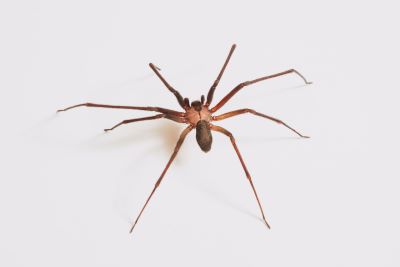Spider
Animal Bites Animal Control Animal Friendly Disasters Pets Public Places
Spider Bites
(Animal Bites, Venomous Bites)
This Bites
Venomous Spiders in Texas
Texas has two venomous species of spiders, the black widow (Latrodectus mactans) and the brown recluse (Loxosceles reclusa). Both of these species of spiders can be found indoors and outdoors through out the State. The female black widow can be identified by its jet black color, globular abdomen with a reddish or yellowish hourglass on the underside. Male, black widow spiders are smaller, brown and nondescript. The black widow spider is aptly named because the female usually eats the male after mating. The venom of the black widow is a neurotoxin and can lead to severe systemic reactions and in rare cases, death. The black widow's venom is reportedly 15 times more toxic than the venom of the prairie rattlesnake. However, only a minute quantity is injected with each bite. The most severe reactions occur in children and older adults. Black widow spiders can frequently be found in woodpiles, boxes, outdoor toilets, meter boxes, under eaves, and other undisturbed areas.

Brown recluse spiders are golden brown in color and can be identified by the characteristic dark brown to black fiddle-shaped pattern on the head region. Brown recluse venom has necrotizing enzymes that generally cause local or systemic reactions. These spiders commonly live in basements and garages of houses and can be found hiding between boards, boxes, and old towels and clothes in dark, undisturbed areas. Neither the black widow nor the brown recluse spiders are aggressive but they will both bite when accidentally trapped, disturbed or threatened.
Symptoms of Envenomization by Spiders
The severity of a victim's reaction to any spider bite depends on the area of the body bitten, the amount of venom injected, depth of the bite, the victim's age, and other factors. Additionally symptoms usually differ between black widow bite victims and brown recluse bite victims. Many times, the bite of a spider feels like a pin-prick and may not be noticed by the victim.
General Black Widow Spider Envenomization Symptoms
- abdominal cramping
- abdominal rigidity
- convulsions
- headache
- lesion at site of bite
- nausea
- pain
- profuse sweating
- tremors
- unconsciousness
- vomiting
General Brown Recluse Spider Envenomization Symptoms
- chills
- fever
- nausea
- necrosis at the bite site
- nothing
- red white and blue lesion at the bite site
- restlessness
- weakness
First Aid for Spider Bite Victims
Antivenom is generally not prescribed for black widow envenomizations. Although an antivenom for the black widow is available, it has a high probability of an anaphylactic reaction and is used only in extreme cases. There is no effective antivenom available for brown recluse envenomization victims. All spider bites posses the potential for a secondary infection and should be washed thoroughly with soap and water or an antiseptic if available. If possible, the spider should be captured for positive identification. An Ice pack may be applied to alleviate pain and swelling in the bite area. First Aid is of limited help so you will need to contact the Texas Poison Center Network at 1-800-POISON-1 (1-800-222-1222) or your family physician for information about treatment. In severe cases, where the victim has systemic reactions, the victim may be hospitalized and the physician may administer cortisone-type hormones, muscle relaxants, or pain relievers.
Spider Bite Prevention
Prevention is the best treatment of all for spider bites. Several chemical and non-chemical controls are available for reducing the risk of being bitten by spiders in general.
Non-Chemical Spider Control
- Eliminate or reduce bright outdoor lighting that attracts insects (spiders' food supply).
- Trim weeds and grass from around buildings and remove debris to discourage insects and spiders from living close by.
- Seal or caulk outside openings that may allow spiders to enter the house.
- Use a vacuum cleaner to remove spiders, webs, and egg sacs from inside the house.
- Wear gloves and watch carefully when in areas where spiders are likely to live.
- Shake out shoes, clothes, towels, linens, etc. which have been stored and undisturbed for long periods of time.
Chemical Spider Control
- Have a professional apply a residual pesticide around the perimeter of the building. Over the counter pesticides are often not strong enough to effectively control spiders.
- Contact pesticides may also be used indoors. However strict attention should be given to the manufacturer's label and all warnings and precautions observed. It may be best to have a professional apply more effective pesticides approved for indoor use.
